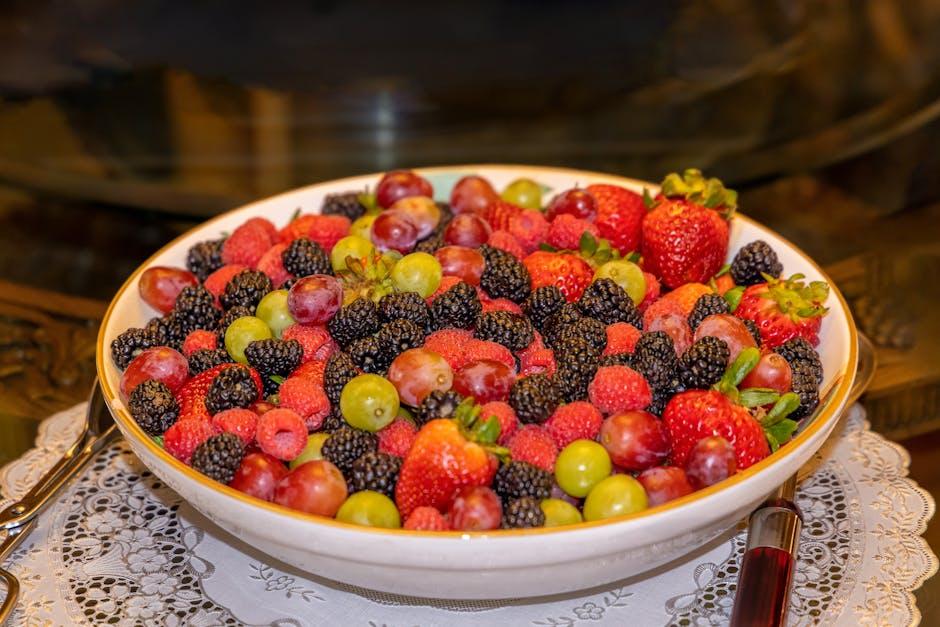Exploring the culinary world through the eyes of a 9-month-old is like embarking on a delicious adventure filled with new tastes, textures, and discoveries. As your little one transitions from purees to more solid foods, each mealtime becomes a canvas for exploration and growth. In this article, we will delve into the exciting journey of feeding a 9-month-old, offering insights, tips, and recipes to make this milestone both nutritious and delightful. Join us as we celebrate the joy of nourishing your little gourmet in the making.
Table of Contents
- – Introducing Solid Foods to Your 9-Month-Old: What You Need to Know
- – Nutritious Food Options for Your Growing Baby
- – Transitioning from Purees to Textured Foods: Tips and Tricks
- – Creating a Healthy and Balanced Meal Plan for Your 9-Month-Old
- Q&A
- In Retrospect


– Introducing Solid Foods to Your 9-Month-Old: What You Need to Know
When it comes to introducing solid foods to your 9-month-old, it’s important to consider their developmental readiness and dietary needs. At this stage, your little one is transitioning from purees to more textured foods, which can help enhance their oral motor skills and promote self-feeding. Here are some essential points to keep in mind:
- Offer a variety of nutritious foods to ensure they receive essential vitamins and minerals.
- Introduce one new food at a time to monitor for any potential allergies or sensitivities.
- Encourage self-feeding by providing age-appropriate utensils and allowing them to explore different textures.
Creating a balanced meal plan for your 9-month-old can feel like a puzzle, but with the right approach, you can ensure they are getting the nutrients they need for healthy growth and development. Consider incorporating the following into their diet:
| Food Group | Serving Size |
|---|---|
| Grains | 1/4 cup of rice cereal or oatmeal |
| Fruits | Soft, ripe fruits like mashed bananas or diced peaches |
| Vegetables | Steamed and diced veggies such as sweet potatoes or carrots |


– Nutritious Food Options for Your Growing Baby
When it comes to feeding your 9-month-old baby, it’s essential to offer a variety of nutritious foods to support their growth and development. Incorporating a balanced diet can provide the necessary nutrients for your little one’s health. Consider introducing soft fruits like mashed bananas or avocados, which are rich in vitamins and healthy fats. These can be easily mashed or pureed for your baby to enjoy. **Remember to introduce one new food at a time to monitor for any potential allergies or reactions.**
For a protein boost, consider including soft cooked vegetables like sweet potatoes or carrots. These vegetables are not only packed with essential vitamins and minerals but also offer a different texture for your baby to explore. You can steam or boil these vegetables until they are soft enough to be easily mashed for your baby to consume. Experimenting with different flavors and textures can help expand your baby’s palate and encourage healthy eating habits from a young age.
| Food | Benefits |
| Soft fruits (bananas, avocados) | Rich in vitamins and healthy fats |
| Soft cooked vegetables (sweet potatoes, carrots) | Packed with essential vitamins and minerals |


- Transitioning from Purees to Textured Foods: Tips and Tricks
Transitioning your little one from purees to textured foods can be an exciting yet challenging journey. One key tip is to introduce new textures gradually, starting with soft pieces and moving on to more complex textures as your baby gets accustomed to chewing. Encourage self-feeding by offering small, bite-sized pieces that are easy for little hands to grasp. As they explore different textures, be patient and supportive, allowing them to learn at their own pace.
Incorporate a variety of textured foods into their diet, such as mashed avocado, steamed carrots, and diced fruits. Experiment with different flavors and combinations to keep mealtime interesting and engaging. Remember, each baby is unique, so pay attention to their cues and preferences to tailor their meals accordingly. By offering a diverse range of textures and flavors, you can help your little one develop their palate and enjoy a nutritious and balanced diet.

- Creating a Healthy and Balanced Meal Plan for Your 9-Month-Old
When it comes to crafting a nutritious meal plan for your 9-month-old, variety and balance are key. Introducing a wide array of foods can help ensure your little one gets a diverse range of nutrients needed for healthy growth and development. From fruits and vegetables to grains and proteins, each food group plays a vital role in supporting your baby’s nutritional needs.
Incorporate colorful and flavorful ingredients into your baby’s meals to stimulate their taste buds and encourage a love for wholesome foods. Mixing pureed fruits like ripe bananas and peaches with soft-cooked vegetables such as carrots and sweet potatoes can create a visually appealing and tasty meal. Remember to introduce new foods gradually, keeping an eye out for any signs of allergies or sensitivities. Consult with your pediatrician if you have any concerns about your baby’s diet or feeding habits.
Q&A
Q: What are some nutritious food options for my 9-month-old baby?
A: Introducing a variety of nutrient-rich foods is essential at this stage. Try mashed fruits like bananas or apples, cooked vegetables such as sweet potatoes or carrots, and soft proteins like finely shredded chicken or tofu.
Q: How can I ensure my baby is getting enough iron in their diet?
A: Iron-fortified cereals, pureed meats, and legumes are excellent sources of iron for your little one. Including these in their meals can help prevent iron deficiency and support healthy growth.
Q: Are there any foods I should avoid giving to my 9-month-old?
A: It’s best to steer clear of honey, whole nuts, large chunks of food, and foods high in sugar or salt. These can pose choking hazards or may not be suitable for your baby’s developing digestive system.
Q: What are some creative ways to encourage my baby to try new foods?
A: Mixing different purees together, offering foods in various textures, and letting your baby explore with their hands can make mealtime fun and adventurous. Remember, patience is key when introducing new flavors!
Q: How can I incorporate allergenic foods into my baby’s diet safely?
A: Gradually introducing allergenic foods like eggs, dairy, peanuts, and seafood, one at a time, can help identify any potential allergies. Consult with your pediatrician before introducing these foods to rule out any concerns.
Q: What are some signs that my baby is ready to start self-feeding?
A: If your baby can sit up unassisted, bring objects to their mouth, and shows interest in grabbing food from your plate, they may be ready to start practicing self-feeding with appropriate finger foods.
Q: How important is it to prioritize a balanced diet for my 9-month-old?
A: Providing a balanced diet rich in essential nutrients is crucial for your baby’s growth and development. Variety is key to ensure they receive all the necessary vitamins and minerals for optimal health.
In Retrospect
As your little one embarks on the flavorful journey of solid foods, catering to their growing needs and tastes becomes an exciting adventure. Remember, every bite is not just nourishment but a chance to explore new textures, tastes, and experiences with your 9-month-old. Embrace the mess, savor the smiles, and cherish these moments of culinary discovery together. Cheers to creating delicious memories and nurturing your budding foodie!




0 Comments